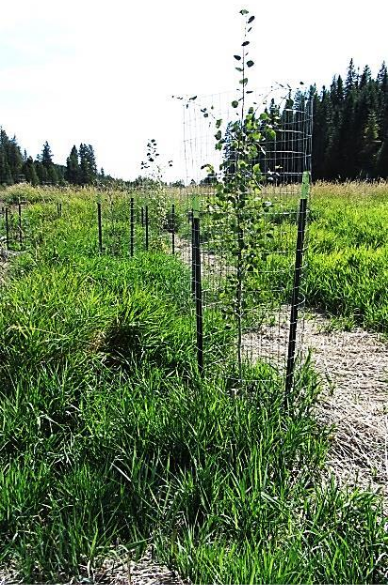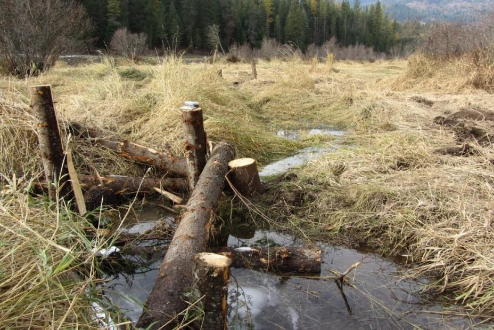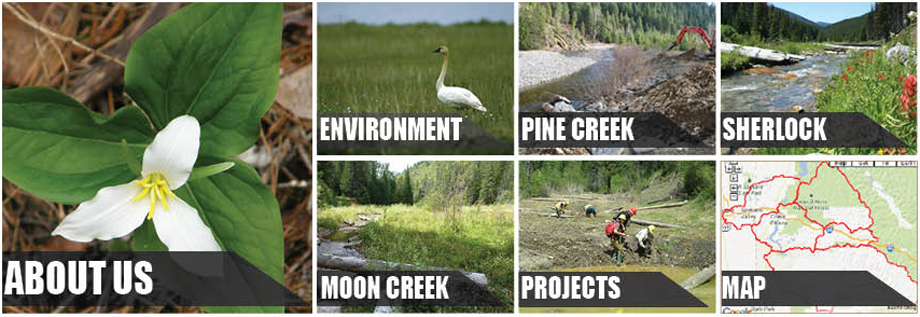Lake Creek Watershed Restoration


Status: Ongoing
Location:
Lake Creek is a major tributary to Coeur d’Alene Lake, which is a tier 1 priority for restoration identified in the Restoration Plan. The 23,056 acre watershed supports both resident and adfluvial forms of westslope cutthroat trout.
Background:
The Lake Creek watershed has been the focus of a comprehensive and long-term management approach since the early 1990’s with the singular goal to restore, protect, expand, and reestablish native westslope cutthroat trout populations to sustainable and harvestable levels. The approach includes significant investment in research and monitoring to inform management decisions, validate assumptions associated with the restoration approach and focus and prioritize management actions on the critical ecological and habitat factors limiting the recovery of westslope cutthroat trout. During this timeframe, the Tribe has taken steps to analyze ecosystem processes likely to influence the productivity of fish communities, and identify and scale restoration actions to match the geographical distribution of fish populations, including a substantial portion of the spawning and rearing areas utilized by various life stages at different times.
Restoration Completed:
A suite of 22 integrated projects have been identified that focus on treating identified impairments within key spawning and rearing streams in the upper Lake Creek watershed. Implementation will support recovery of resident and adfluvial stocks of westslope cutthroat trout through restoration and enhancement of landscape processes that form and sustain riverine habitat diversity. The general objectives in implementing this effort in the Lake Creek Watershed include: 1) address channel impairment by increasing habitat complexity and improving floodplain connectivity within affected reaches; 2) improve riparian function by conserving functional riparian areas, managing impaired areas for increased growth and recruitment of large wood to streams, and restoring native vegetation communities; 3) improve connectivity for native fish by removing passage barriers; and 4) improve spawning gravel quantity and quality by reducing sediment delivery to streams from roads and improving drainage and road surface conditions.
Benefits:
The Lake Creek Watershed Restoration Project will improve rearing and spawning habitat for both resident and adfluvial westslope cutthroat trout in the Lake Creek watershed. The suite of actions will treat more than 5,069 m of channel, 3,492 m of riparian habitats and improve access for cutthroat trout to an additional 3,352 m of stream habitats with direct benefits in increasing fisheries production. The project will play a significant part in reducing fine sediment that is transported from forest roads to streams in the watershed. This reduction in sediment will help keep spawning gravels clean and improve survival to emergence for incubating eggs and for other early life stages of cutthroat trout.
The projects are well focused in the three tributaries that encompass much of the production potential for the watershed. Within these tributaries mean cutthroat densities range from 1.6 – 82.7 fish/100 m. The expected habitat improvements can directly ameliorate the patchy distribution and abundance of cutthroat to achieve a more even distribution of fish at higher abundances. These changes can be measured over time to more fully describe the benefits of this work.
Other fish and wildlife species that will be positively affected by the projects include cedar sculpin (Cottus schitsuumsh), beaver, muskrat, mallard, moose, whitetail deer, yellow warbler, blackcapped chickadee, tailed frog, Idaho giant salamander, and the candidate threatened Columbia spotted frog, among other species. Secondary species affected include threatened bull trout.
The focus of project benefits on known adfluvial populations in an uncontaminated watershed like Lake Creek may represent the best opportunity for conservation and recovery of this injured resource owing to the lake’s inherent ability to buffer fish populations from environmental changes, including climate change, and the ability of these adfluvial populations to serve as sources for recolonization.
Contact:
Coeur d’Alene Tribe
850 A Street
PO Box 401
Plummer, ID 83851
208-686-6903
angelo.vitale@cdatribe-nsn.gov
Sponsor:
Partners:
